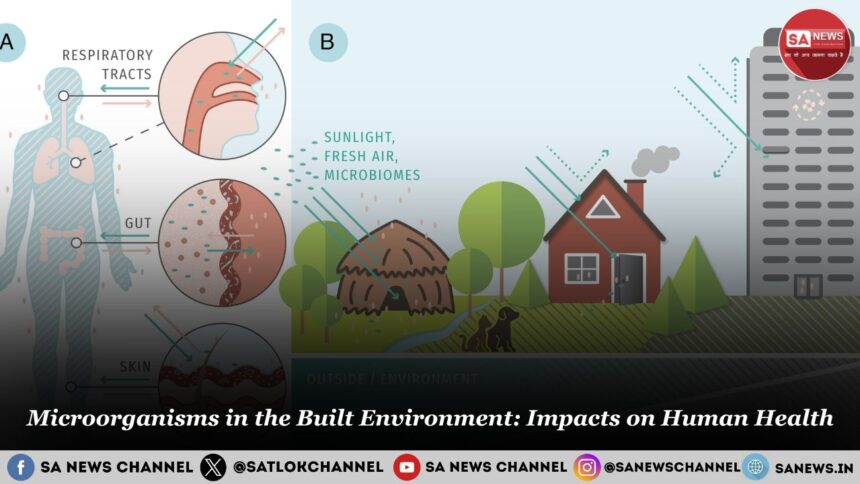Built environment microorganisms affect human health in various ways. Some microorganisms can be harmful, while others are necessary and even beneficial.It is important to know their classification and effects.
Benefits of Microorganisms: Digestion:
The microorganisms in the gut help digest food and absorb essential nutrients.This process enhances immunity and energizes the body.
Immunity:
Some microorganisms help boost immunity. They protect the body by fighting disease-causing microorganisms.
Nutrition:
Some microorganisms produce essential nutrients like Vitamin K and Vitamin B12, which are essential for maintaining good health.
Ecological balance: Microorganisms naturally decompose dead and decaying matter, thereby maintaining ecological balance.
Disadvantages caused by microorganisms:
Infection:
Some microorganisms cause diseases in humans, such as colds, coughs, and other infectious diseases. Some microorganisms can also cause severe illnesses.
Allergies: Some microorganisms can cause allergies and asthma. Allergies occur when the immune system overreacts to certain microorganisms.
Antibiotic resistance: Some microbes develop resistance to antibiotics, making them difficult to eradicate.
What are the effects of microorganisms on the environment?
The most important impact of microbes on Earth is their ability to recycle the primary elements that make up all living systems, particularly carbon, oxygen, and nitrogen (N).Photosynthetic microorganisms contribute to primary production by absorbing atmospheric CO₂ and converting it into organic matter.
Also Read: Medical Science and Its Wonders Transforming Health, Healing, and Human Life
How are microorganisms used in the environment?
Microorganisms help clean the environment. They break down dead and decaying matter from plants and animals, converting it into simple substances that can then be used by other organisms.These simple substances are absorbed by plants and animals, supporting ecosystems. Microorganisms also help decompose harmful substances, contributing to environmental cleanup.
What are the four types of microbiology?
Microbiology can be classified based on taxonomy, as in the case of bacteriology, mycology, protozoology, and phycology.
Implications of microbial production for human microbial diversity
In developed parts of the world, humans are born and spend most of their lives indoors, which may limit the diversity of microorganisms they come into contact with. Building envelopes—including foundations, walls, windows, and roofs—separate indoor and outdoor environments, reducing exposure to outdoor microbes while increasing contact with indoor microorganisms.
FAQs
Q. What are the 5 microorganisms in soil?
Ans: Bacteria, actinomycetes, fungi, protozoa and nematodes.
Q. How many microorganisms does soil contain?
Ans: Soil contains billions of microorganisms per gram, primarily bacteria and fungi.
Q. What do microorganisms do in the environment?
Ans: They consume and produce important greenhouse gases like CO₂, CH₄, and N₂O, influencing climate regulation.
Q. What are the different types of microorganisms in the environment?
Ans: Bacteria, archaea, fungi, protozoa, algae and viruses









